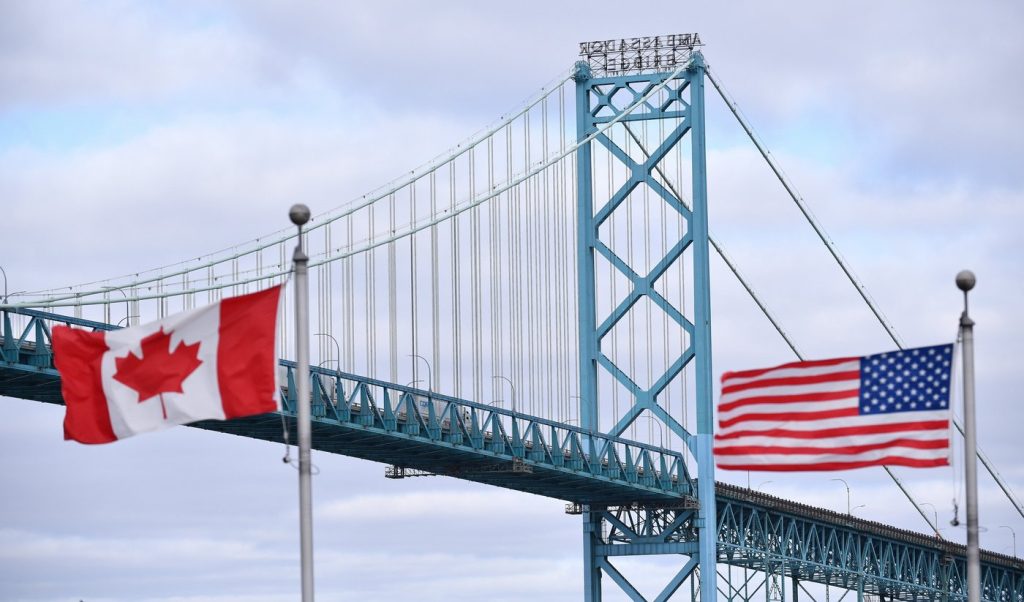The Canadian economy has demonstrated "some resilience," according to Bank of Canada governor Tiff Macklem, despite increasing pressure from U.S. tariffs. Recently, U.S. President Donald Trump imposed a 35 percent tariff on Canadian goods, adding to existing duties on various products including steel, aluminum, automobiles, and semi-finished copper.
As these tariffs accumulate, economists are observing signs of strain within the Canadian economy, but they are not predicting an imminent collapse. TD Bank economist Marc Ercolao pointed out that it is somewhat surprising to see Canada managing to hold its ground against significant disruptions from its largest trading partner. Ercolao noted, “Many months ago, ourselves and other economic forecasters had an outlook for a much weaker Canadian economy. Obviously, that isn’t manifesting now.”
Impact of Tariffs on Economic Activity
Statistics Canada provided a snapshot of the economic state as the second quarter of the year concluded, where many tariffs had come into full effect. Although there were minor contractions noted in real gross domestic product (GDP) in April and May, there was a partial rebound in June. If these early estimates hold, Statistics Canada suggests overall growth for the quarter could remain flat.
The fluctuations in the economy are attributed to volatility, with businesses initially accelerating activity to avoid tariffs, leading to a subsequent weakening in activity during the second quarter. Ercolao emphasized that while the exact impact of tariffs is hard to define, a clear trend is developing, stating, “Over the last six months or so, economic activity is somewhat flatlining.”
While the services sector has been relatively stable, export-driven industries like manufacturing and transportation are facing the brunt of the tariff impacts. To combat these challenges, the Canadian government has implemented numerous programs to assist affected workers, alongside strategies to boost spending on defense and infrastructure.
Despite low levels of business and consumer confidence, Macklem noted improvements in recent surveys conducted by the central bank. He highlighted that consumption continues to grow, albeit modestly, saying, “It’s certainly being restrained by the uncertainty caused by tariffs. But it is growing, and we expect that to continue through the third and fourth quarters.”
Prospects for Recession
The Bank of Canada opted to keep its policy interest rate steady at 2.75 percent for the third consecutive time. According to Ercolao, if the central bank were significantly worried about the economy's capacity to endure the U.S. tariffs, a rate reduction would likely have taken place. Following recent GDP data, BMO raised its forecast for the upcoming quarter, suggesting Canada could avoid a technical recession this year. BMO’s chief economist Doug Porter noted the positive influence of a recent personal tax cut and strong domestic travel demand amid the ongoing trade conflict.
Nonetheless, some economic forecasters still predict a recession driven by tariffs. In the latest monetary policy report, the Bank of Canada outlined a scenario where the current tariff situation continues, foreseeing that Canada could avoid a recession under such circumstances. Growth projections for 2025 and 2026 remain positive, albeit half a percentage point lower than if tariffs were not in place.
Macklem discussed the economic outlook, indicating growth even with current tariffs, but cautioned, “It’ll be on a permanently lower path. Unfortunately, the sad reality is that tariffs mean the economy is going to work less efficiently.”
Future of Tariffs
Porter suggested that the actual impact of Trump’s new 35 percent tariff might be less severe than the headline number implies. Due to exemptions for Canadian exports compliant with CUSMA, BMO estimates the effective U.S. tariff rate may be around seven percent, slightly higher than previous levels. However, with CUSMA up for renegotiation in 2026, the significant tariff rate could become a bargaining tool in trade negotiations.
The Bank of Canada proposed a separate “escalation” scenario, raising concerns that the U.S. might revoke Canada’s CUSMA exemption while increasing global tariffs, which could result in an additional 1.25 percent drop in real GDP by 2027 in a more severe situation. Although this would be damaging, analysts conclude it would not be catastrophic.
Ercolao remarked that while initial concerns regarding tariffs were tied to the rapid pace of their implementation, the gradual approach taken allows businesses time to adapt. Reflecting on the onset of Trump’s presidency, he stated, “Had he gone 100 percent on his tariff plan right away, we probably would have seen a deep economic contraction just because it would have been so sudden.” He noted the current pace provides an opportunity for the Canadian economy to mitigate negative effects as it adjusts to the evolving tariff landscape.










